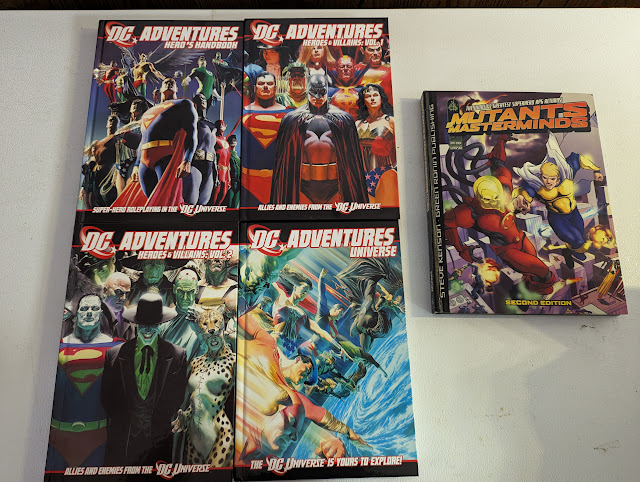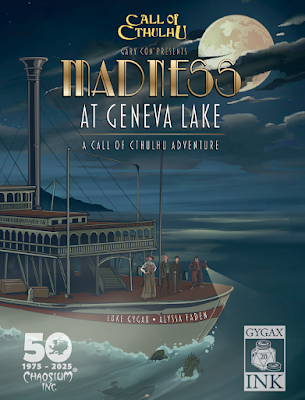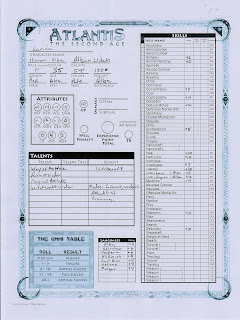
The year is 1873. Ulysses S. Grant begins his second term as
President of the United States. There is no let up in the Indian Wars on the
new American frontier as barbed wire, denim jeans, and the 1873 model
Winchester rifle, ‘The Gun That Won the West’, are all invented. Lieutenant
Colonel George Armstrong Custer clashes for the first time with the Sioux for
the first time and P.T. Barnum’s circus, The Greatest Show on Earth, debuts in
New York City. The wounds of the Civil War remain and in the wake of the
economic crisis that followed, an ever growing number have fled west into the
newly American territories of Arizona, California, Nevada, Texas, Utah, along
with parts of New Mexico and Colorado, looking to find new lives for themselves
in what were once part of Mexico. Settlers, prospectors, miners, cattlemen and
herders, businessmen and women, farmers, outlaws and lawmen, all seeking their
fortune one way or another in the new lands. There they bring strife and they
find strife, with each other and with the peoples already there, which includes
the Native Americans and the Hispanics. Greed and prejudice still drive some
men. Others want to avoid such concerns and to live a good life, to make a good
life for their families and for others, and to protect themselves and their
homes.
The American frontier of 1873 is the setting for
Tales of the Old West.
Funded via a
Kickstarter campaign and published by
Effekt, this is a
roleplaying game which returns to old genre, that of ‘Cowboys & Indians’,
combining a mature approach to both the subject matter and the history with the application of the
Year Zero engine. This means that it uses the same mechanics first seen in
Mutant: Year Zero – Roleplaying at the End of Days, the
Alien: The Roleplaying Game, and
Vaesen – Nordic Horror Roleplaying, all roleplaying games published by
Free League Publishing. It also means that it has a familiar mechanical structure and design. It uses six-sided dice—here of two colours, one for Trouble dice and the other for standard dice—with the aim being to roll a single six as a success. Each Player Character has an Archetype, an Age which determines the points to be assigned to the four Attributes and Abilities, which is what Tales of the Old West calls skills (younger Player Character have higher Attributes and lower Abilities, older have lower Attributes and higher Abilities), one or more Talents derived from the Archetype (there are other generic Talents available when a Player Character gains experience), a Faith or belief that sums up their outlook on life, a Dream which will drive the Player Character to act, and together with other Player Characters, a town or settlement where they live and which they try to improve. Each Player Character will also have Relationships with his fellow Player Characters, one of whom he will regard as his Pardner. Talents, Relationships, and Faiths are all suggested by the Archetypes. Then,
Tales of the Old West has a set of community rules which first see the Player Characters invest in a business and then in the long term, are used track the growth and prosperity of the town or settlement where the Player Characters live. As the seasons pass, the town provides hooks and opportunities for adventure and roleplaying and can be used to drive the ongoing campaign forward.
A Player Character in
Tales of the Old West has four attributes—Grit, Quick, Cunning, and Docity. Of these, Docity is the ability of a character to learn. He has an Archetype, of which there are ten. These are Gentlefolk, Grifter, Homesteader, Labourer, Lawman, Outlaw, Prospector, Ranch Hand, Tracker, and Trader. Some of these are quite broad. So, Gentlefolk includes artists, journalists, teacher, entertainers, politicians, and so on, whilst Grifter covers swindlers, cardsharps, thieves, and the like. The Archetype sets the base value for attributes and skills, and provides options in terms of Talents, Dream, and Faith. For example, the Prospector suggests the Talents of Brawler, Engineer, Guard Dog, and Herbalist, whilst his Dream might be ‘“There’s gold to be found in them thar hills” and it’s all going to be yours’ or ‘The railroad will build a new civilisation in the west, and you will be the architect’, and his Faith, ‘God’s design is all around me, and he has a design for my fate too’ or ‘The Strength of the land itself keeps me on my feet.’ Faith need not be religious faith—although religious, Christian faith, prevailed during this period and often drove the expansion west, but can instead be a firmly held belief.
Tales of the Old West provides two means to create a Player Character. In the quick method, a player selects an Archetype and modifies it according to the age—Greenhorn, Tested, and Old-Timer—of the Player Character. He then selects one or more Talents, according to age, and then a Faith and a Dream, chooses some equipment. Lastly, he decides on the Relationships his Player Character has with the others.
Name: Virgil BruceArchetype: TraderAge: Greenhorn
Grit: 04 Labour 1 Presence 1 Fightin’ 0 Resilience 0Quick: 03 Move 0 Operate 0 Shootin’ 0 Light-Fingered 0Cunning: 04 Hawkeye 0 Nature 0 Insight 2 Animal Handlin’ 0Docity: 04 Performin’ 2 Makin’ 2 Doctorin’ 0 Booklearnin’ 2
TalentsLawyer
Big Dream‘Where there is opportunity, so comes law, and by the Lord this town needs a judge in good standing—that will be you.’
Faith (4)‘Money talks. Always has, always will.’
Gear$45Ounce of goldRoper repeating shotgun and D6 rounds
The other method is to use the Lifepath system included in
Tales of the Old West. This provides a more detailed Player Character, determining where he comes from and what his family is like, and then what he has done. This is how he has made his Living, up to three times, depending upon his age. This provides far more flavour and detail.
Name: Deborah LeungArchetype: TraderAge: Tested
Place of Birth: ChinaUpbringing: “You come from an old sea-faring family. It is said your forefathers traded across the Pacific long before the Europeans discovered that coast. If it’s true, it made them rich. Gain +1 point of Capital.”What Of The Family You Left Behind?: “Your family was big until the curse. Death, madness, and foolishness reduced them all to ruins, and you had no choice to leave those who still survived behind.”Livings: Frontier Folk (‘You used to come into town just to sell your furs. But it’s warmer to sit and sell those furs. So now you sell clothes for the discerning outdoorsman. Make your next Living roll on the Trader Living Outcome Table.’)Trader (‘You make the most of the influx of single men coming to the town by advertising “employment opportunities for young women” back east. Your successful bordello earns you the respect of a town elder. Make your next Living Roll on the Gentlefolk Living Outcome Table.’)
Grit: 04 Labour 0 Presence 4 Fightin’ 2 Resilience 1Quick: 02 Move 0 Operate 0 Shootin’ 0 Light-Fingered 0Cunning: 04 Hawkeye 2 Nature 0 Insight 3 Animal Handlin’ 0Docity: 04 Performin’ 4 Makin’ 3 Doctorin’ 0 Booklearnin’ 1
TalentsKnife FighterCharming
Big Dream‘Where there is opportunity, there is a woman. I will make my way to respectability in this town and beyond.’
Faith (4)‘Money talks. Always has, always will.’
GearKnifeOutfit: Store with 1 CapitalOutfit: Salon with 1D3 CapitalCapital: 1Harford Coach Gun & 2D6 Cartridges$28
Mechanically,
Tales of the Old West uses the
Year Zero engine. To have his character undertake an action, a player rolls a number of dice equal to a combination of Attribute and Ability. The pool of dice consists of ‘Trouble’ dice and standard dice. There will always be ‘Trouble’ dice in the dice pool, up to five. A single roll of a six on either die type indicates a success. Multiple successes improve the outcome and allow the Player Character to perform stunts. In combat, these might be to inflict extra damage or inflict a critical injury, but for other Abilities, Stunts include giving a bonus on subsequent rolls, completing a task quicker, impressing someone, and so on. If no sixes are rolled, the action fails. If ones are rolled on the ‘Trouble’ dice, these have no effect unless the player decides to ‘push’ the roll. This enables him to reroll any dice that did not roll a one or a six. However, if there are any ones remaining after the roll has been pushed, even if the Player Character has succeeded, they trigger a check on the ‘Trouble Outcome Table’. There is a ‘Trouble Outcome Table’ for conflict and physical situations and for social and mental situations. The effects vary depending how many ones have been rolled.
For example, if a Player Character has generated three ones in a conflict, the outcome might be “You’re shaken and shocked. For the rest of the scene, you suffer -2 to all rolls using the ability that suffered the Trouble” or “Your gun explodes, your weapon breaks and slices into you, or your blow catches something sharp. You suffer a 6 dice attack, either with Damage and Critical rating of your weapon or Damage 1, Crit 1.” The roll can have a straightforward outcome, but it can also escalate from one column to the next if a player rolls high enough.
Pushing a roll costs a Player Character a point of Faith, of which he has four at the start of every scenario, and ideally, the reason for Pushing a roll should tie in with the Player Character’s Faith statement. Faith can also be spent to buy off Trouble dice showing a one. It is better to do this before a roll is pushed as it still allows the dice to be rolled as part of the Push attempt, but negates the dice if done after the Pushed roll. Faith can be recovered for making good rolls without Pushing, or for undertaking actions such as a Player Character saving his Pardner, praying, or taking revenge, and for performing rituals like cleaning a weapon, grooming a horse, going to church, and so on. Faith can be lost, though this is a roleplaying choice rather than a mechanical one.
Conflict in
Tales of the Old West uses the same core mechanics. Initiative is determined by drawing cards from a deck of ordinary playing cards, whilst in combat, a Player Character can act twice per round. This is either a fast action and a slow action, or two fast actions. A Slow Action might be ‘Shoot’, ‘Melee Attack’, and ‘Mount’, whilst a ‘Fast Action might be ‘Quick Shot’, ‘Aim’, and ‘Draw Weapon’. The rules cover brawling, the use of the lasso, as well as gunfights, including, of course, duels. As expected, duels are a step-by-step process, beginning with the face-off and then going through the draw and the shoot-off to see who is left standing. Other combat rules cover fanning, overwatch, cover, and ammunition. All weapons inflict a minimum amount of damage, applied directly to the defender’s Attributes. Damage done to Grit is called Hurts, if to Quick it is Shakes, to Cunning it is Vexes, and to Docity, it is Doubts. If reduced to zero, an Attribute is Broken. However, if the number of Successes rolled on an attack equal the Crit Rating of the weapon used, then a critical attack has been made. Critical hits are inflicted if either Grit or Quick is Broken. Overall, combat is fairly quick and brutal. Weapons are quite detailed and include a variety of historical models, noting in particular the difference between single action and double action pistols, the former being slower, but lighter and more accurate, the latter being heavier, but faster.
So far, so good.
Tales of the Old West can do all of the things that you expect of a Wild West roleplaying game. Duels, gambling, chases, cattle rustling, bank robberies, and more. However, where it really begins to shine is in its support and capacity for long term play. This can start during Player Character creation with the players deciding upon a group concept. Suggestions include lawmen and bounty hunters, outlaws, ranchers, farmers, business owners, vaqueros & cowboys, and mountain folk. Selecting a concept suggests the type of campaign that the players want to roleplay as well as granting their players bonuses in terms of equipment and money. Whatever the campaign concept, what
Tales of the Old West really encourages the players and their characters to do is to earn sufficient dollars to make enough Capital, which can then be invested in a business. This can then generate further monies to make more Capital and so on. This gives both the players and their characters a personal attachment to the town. Alongside this, with the Turn of the Season, as well as potentially, from scenarios, the players earn Settlement Points, which can also be invested in the town. The progress and growth of the town itself is tracked in six ratings—Farming, Mercantile, Natural Riches, Law, Civic, and Welfare. The Settlement Points are spent on amenities that will adjust the various ratings. For example, holding a Season fair will increase farming and Mercantile both by one, Civic by two, but reduce Law by one. The combination of town prosperity, the Player Characters’ business outcome, a personal fortune roll, and the amenities added with the expenditure of Settlement Points, and what the Game Master has is a set of prompts around which she can design adventures, roleplaying opportunities, and themes. However, whilst a town can grow and prosper, it can also decline and fail, as can a Player Character’s business, the latter especially if the Player Character gets into debt, whether through gambling or other causes.
This is supported by a discussion of possible themes for a campaign and fifteen detailed story seeds. In terms of setting,
Tales of the Old West provides an overview of the Wild West and its frontier, but focuses very much on the New Mexico territory, presenting a description and a history as well as a campaign framework set in the southwest of the territory. This is ‘The King of Santa Fe’. Set across three fictional towns, it focuses on the machinations and corruption in the Santa Fe Ring, the cadre of politicians and businessmen which dominate the corrupt politics of the territory and circle the governor, Marsh Giddings. All three towns are described, including the mining and lumber town of Steaming Rock, the hunting town of Carson’s Folly, and ranching and mining town of Jornada Springs. All three towns include descriptions of its most notable citizens, and come with several campaign adventure outlines, two of which are the campaign starters and the campaign finishers. This is in addition to the descriptions of the territory’s major towns of cities of Albuquerque, Lincoln, Silver City, and even Las Vegas. Rounding out the support is a starting scenario, ‘Patience is a Virtue’.
In terms of tone,
Tales of the Old West advises player and Game Master alike that the American West of the period is challenging in terms of both history and roleplaying, given the social attitudes of the period. It addresses in turn the status of women, Native Americans, the Hispanics, Chinese, and African Americans, clearly stating that participants should be respectful of the history and the diversity of the various peoples living in the setting it depicts, acknowledging the prejudices of the period, rather than embracing or revelling in them.
Physically,
Tales of the Old West is a buff-coloured hardback with spots of muted colour that echoes classic depictions of the Old West. It is well written, easy to read, and a good looking book.
Respectful of the history,
Tales of the Old West gives players and Game Masters alike the means to run and play more than a black and white, Cowboys & Indians game, a detailed, roleplaying campaign where the Player Characters are part of a community and building a better place. Modern, accessible, and playable, without being overly complex,
Tales of the Old West is a thoroughly engaging and earnest treatment of the Old West.
.jpg) Photo by Pavel Danilyuk This week’s "Monstrous Monday" post isn’t a spotlight on a new monster or a dive into old-school related myths. Instead, I will talk about something more urgent: censorship. And no, not the hand-wringing, moral-panic kind from the 1980s. I’m talking about what’s happening right now on platforms like Itch.io and Steam, where a right-wing, conservative activist group is working hard to reshape what creators are allowed to make and what audiences are allowed to see.
Photo by Pavel Danilyuk This week’s "Monstrous Monday" post isn’t a spotlight on a new monster or a dive into old-school related myths. Instead, I will talk about something more urgent: censorship. And no, not the hand-wringing, moral-panic kind from the 1980s. I’m talking about what’s happening right now on platforms like Itch.io and Steam, where a right-wing, conservative activist group is working hard to reshape what creators are allowed to make and what audiences are allowed to see.




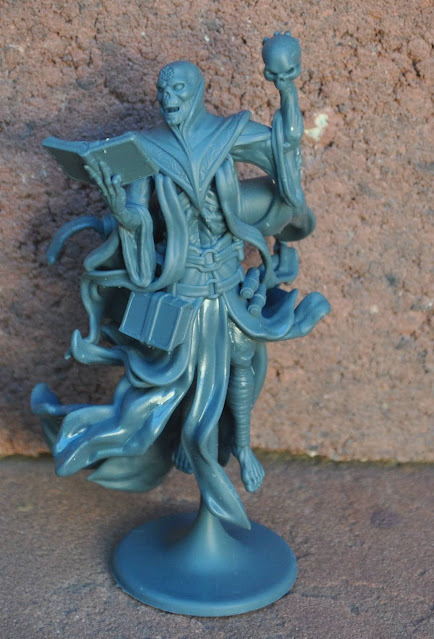



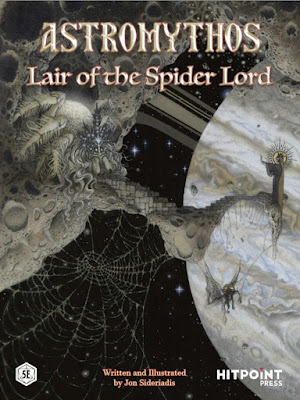

.jpg)


